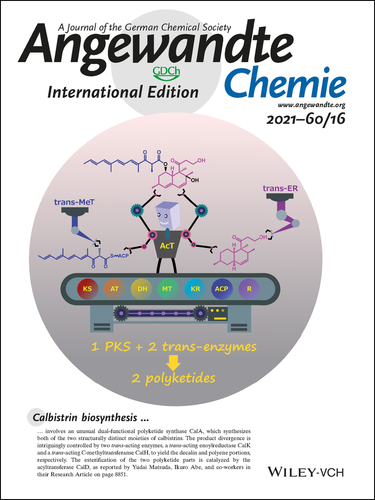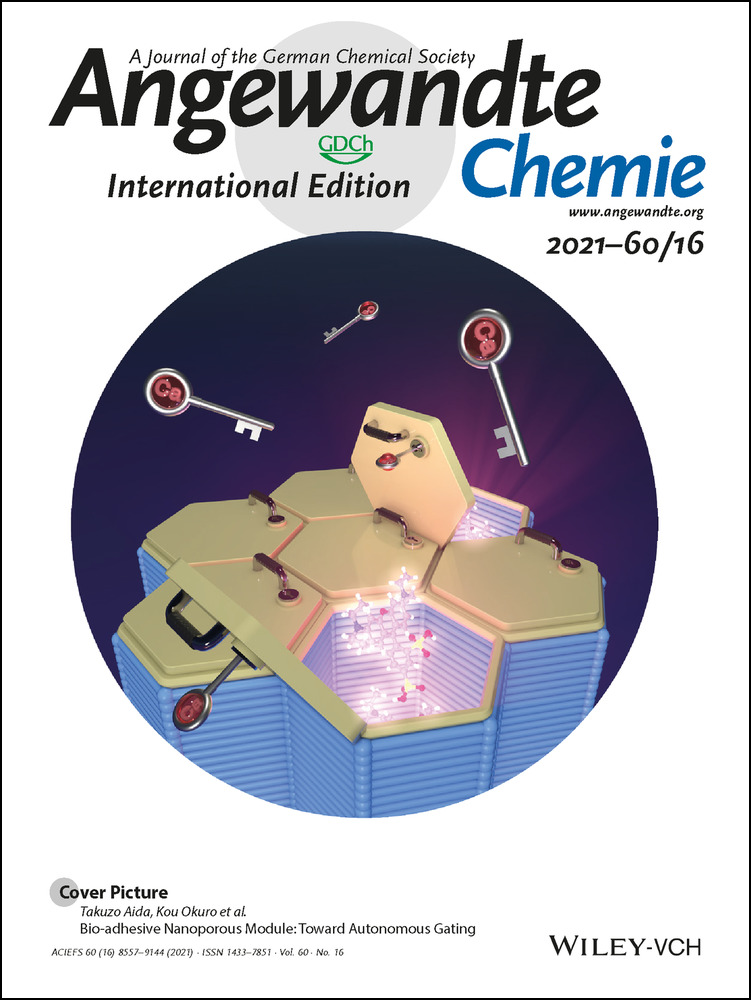Inside Back Cover: One Polyketide Synthase, Two Distinct Products: Trans-Acting Enzyme-Controlled Product Divergence in Calbistrin Biosynthesis (Angew. Chem. Int. Ed. 16/2021)
Graphical Abstract
Calbistrin biosynthesis involves an unusual dual-functional polyketide synthase CalA, which synthesizes both of the two structurally distinct moieties of calbistrins. The product divergence is intriguingly controlled by two trans-acting enzymes, a trans-acting enoylreductase CalK and a trans-acting C-methyltransferanse CalH, to yield the decalin and polyene portions, respectively. The esterification of the two polyketide parts is catalyzed by the acyltransferase CalD, as reported by Yudai Matsuda, Ikuro Abe, and co-workers in their Research Article on page 8851.





